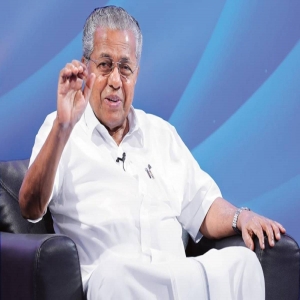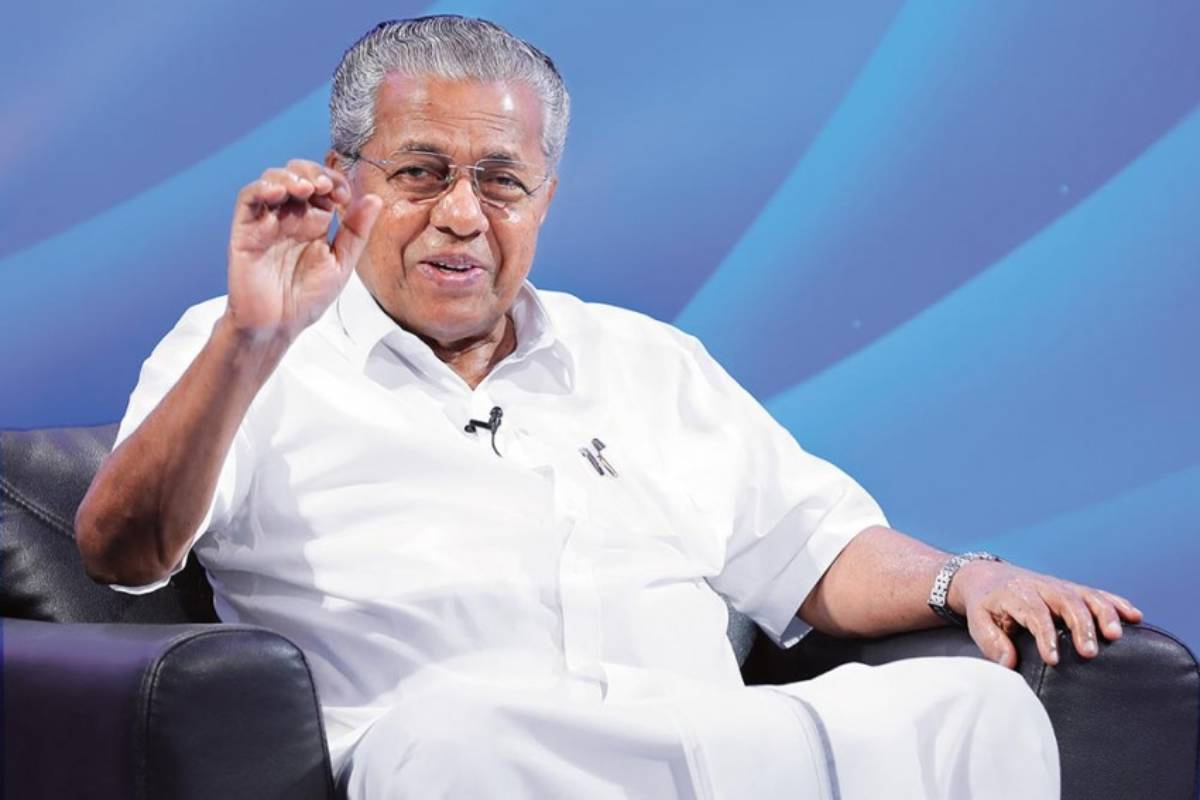
.png) Ram Puniyani
Ram Puniyani

Recently (on December 31, 2024), while inaugurating a conference as a part of the Sivagiri pilgrimage, Pinarayi Vijayan supported the proposal of Swami Satchitanand to stop the practice of removing shirts to keep the torso bare while entering temples. It is believed that this practice came into being to identify those wearing the sacred thread, which the upper caste alone was privileged to wear. Some people doubt it, but it is unlikely that there was any other reason for keeping one's torso uncovered. The one who did not have sacred thread was to be prohibited from entering the temple. Vijayan also said there are efforts to propagate the idea that the Guru was part of the Sanatana tradition. He was far away from it as Guru propagated, 'one caste, one religion, one God.' This equality, irrespective of caste and religion, is far away from the core of Sanatana Dharma.
Vijayan also pointed out that Guru's life and work are very relevant today as violence is being orchestrated by instigating religious sentiments. Guru was not merely a spiritual leader; he was a great humanist. His critics are also criticising Vijayan that during his tenure as Chief Minister, Hindus are being troubled. They give the example of Sabarimala, where the ruling party decided to support the Supreme Court ruling of entry of even menstrual-age women to the sacred temple. BJP spokespersons are also up against Vijayan for insulting Sanatana Dharma in this instance.
The debate around Sanatana seems to have come to the fore for the second time. It first came up when Udhyanidhi Stalin spoke against Sanatana. BJP-RSS asserts that it can't just be reduced to caste and chaturvarnya. Incidentally, in 2022, Kerala submitted a float for the Republic Day parade. It displayed Narayana Guru. The jury from the Defense Ministry stated that the Kerala float should display Shankaracharya from Kaladi rather than Guru. This was a primary reason for rejecting the float.
As such, "Sanatana" means eternal and has been used in Buddhism, Jainism, and Hinduism. Hinduism is a religion that has no single prophet or holy book. The word Hindu is not mentioned in its holy scriptures. It has two major streams, Brahmanism and Shramanism. Brahmanism is based on graded inequality and patriarchal values. Ambedkar renounced this Hinduism as he felt that Hinduism is dominated by Brahmanical values. The Shraman traditions include Nath, Ajivikas, Tantra, and Bhakti traditions, which are away from the values of inequality.
Today, in popular parlance, Sanatana Dharma and Hindu Dharma are interchangeable. Some ideologues claim that Hinduism is not a religion but a way of life based on Dharma. As per them, Dharma is not the same as religion. As such, Sanatana Dharma primarily represents the Varna system, caste inequality, and adhering to these traditions. Dharma is best understood as religiously ordained duties. What social reformers oppose is the rejection of a religion based on inequality.
If we take the example of Ambedkar himself, he regarded Buddha, Kabir and Jyotirao Phule as his Gurus. What matters to him is the rejection of inequality of caste and gender. In medieval India, the saints Kabir, Tukaram, Namdeo, Narsi Mehta, and their likes opposed the caste system, and some had to face attacks from upper caste rulers. Narayana Guru comes in as a great social reformer against the caste system and transcends religious divides. No wonder the present ruling Government, guided by Brahminical Hinduism, can't accept the float from Kerala, which shows Narayana Guru.
Narayana Guru was a deeply humane person. Growing up, he engaged more deeply with spiritualism and the practice of yoga. During his philosophical journey in 1888, he visited Aruvippuram, where he went into meditation. During his stay there, he took a rock from the river, consecrated it, and called it an idol of Shiva. Since then, this place has been known as the Aruvippuram Shiva Temple. This act later came to be known as Aruvippuram Pratishta. It created a lot of social commotion and drew opposition, especially from the upper-caste Brahmins. They did not accept Guru's right to consecrate the idol. He replied, "This is not a Brahmin Shiva but an Ezhava Shiva." This quote of his later became very famous and has been used against casteism. To fight against casteism, he committed his life. His steps were a big practical means of challenging the deep-rooted caste system. The revolutionary understanding of Guru was 'one caste, one religion, one God.'
He went much beyond the caste and religious divides to proclaim a single humanity. Later, he opened the school, which was open even to low castes, quite like what Jyoti Rao Phule did in Maharashtra. Like the principles of Ambedkar's Kalaram Temple movement, he went on to build temples that were open to all the castes.
Swami Satchitanand's recent suggestion, supported by Pinarayi Vijayan, also argues that a bare torso may be medically bad as it may transmit diseases. Many practices need to change with time. One recalls that women did not have the right to cover their upper body. There was a "breast tax" if women covered the top.
Temples are a part of our community life. Such changes in dress code have to accompany the changes in social patterns. The opposition to this is like putting the clock back. In most places, politics in the name of religion is against social changes and changes in political values. Kerala also shows many contrasts in diverse fields. It was here that, on the one hand, the Acharya from Kaladi Shankar countered the Buddhists in debate. The Buddhists argued on materialist grounds to focus on the issues of this World, while roughly speaking, Shankar tried to argue the World is an illusion, supporting the idealist philosophy.
In India, Kerala included, we need to follow the path of saints like Narayana Guru and Kabir, whose humane values gave a direction of amity to society. The conservative' status quo' in most matters retards social progress.